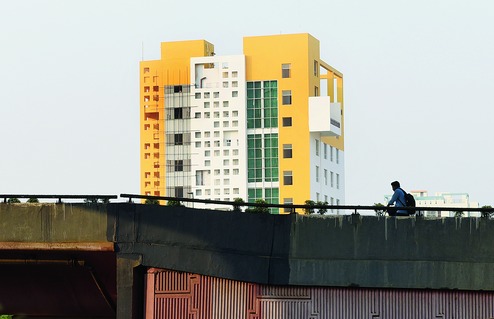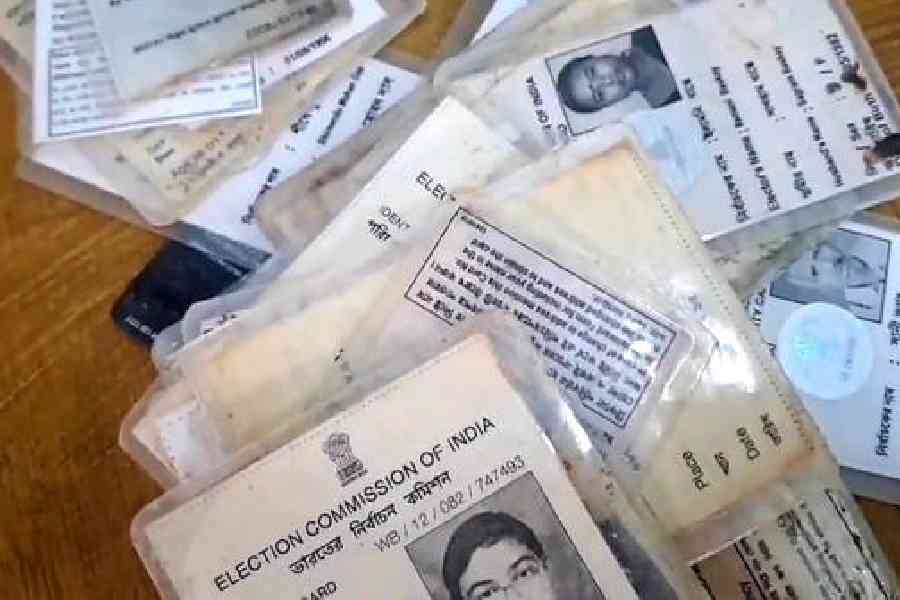

New Town: "Bridge near Axis Mall Rajarhat, please share as much as you can. It's a tragedy waiting to happen."
"Ok not good! I take this route to college and so do many office goers. Not good!"
"This is the dilapidated bridge in front of Axis Mall in Rajarhat..Please take action."
Messages like these accompanying a picture of the New Town flyover with two apparent "cracks" circled in red have been trending on Facebook and Twitter and shared over WhatsApp for about a week.
On Thursday, Metro found the 500m flyover wearing a fresh coat of cement over the two joints. "There was no structural damage whatsoever. We decided to put a layer of cement on the joints to allay fears," said Debashis Sen, the chairman-cum-managing director of the New Town Kolkata Development Authority.
Sen said the picture that had gone viral was at least two years old and had been "circulated with malicious intent".
An engineer with a private construction company said the flyover, which was inaugurated in 2008, appeared to be in good shape. He said the image with two yawning joints was "most likely a doctored one".
But such has been Calcutta's luck with flyovers - two have fallen since 2013, the Vivekananda Road flyover collapse on March 31, 2016, killing 26 and maiming many - that the slightest crack on a concrete wall or girder launches a social media fusillade about impending disaster.
Many of the WhatsApp messages with the allegedly doctored picture of the New Town flyover have originated outside Bengal.
A civil engineer with Larsen & Toubro, which has built the Kestopur-Baguiati flyover over VIP Road, said concrete bridges built to recommended specifications were generally safe for at least 50 years.
According to a Hidco engineer who was part of the team that inspected the "cracks", these are "regular expansion joints" that allow concrete bridges and flyovers to expand and contract without safety being compromised. "The gap in any expansion joint widens or contracts with a change in temperature. Broadly speaking, there is a gap of 10-20 inches on joints like these and so they are visible to the naked eye," the engineer said.










